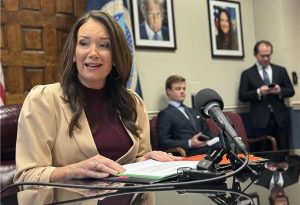
Emissions Reduction Plan rewards tech uptake but starts pricing livestock emissions in five years’ time.
Farm livestock emissions will be priced by 2030 but technology uptake will be incentivised under the government’s second Emissions Reduction Plan, announced today.
The plan outlines the path to keep New Zealand on track to meet its climate change targets while supporting the economy to thrive, Climate Change Minister Simon Watts said.
“New Zealand needs to be stronger in a changing climate. We want our way of life to be protected and minimise the impacts of climate change to our country.
“We can have affordable and secure clean energy, an efficient, competitive agriculture sector and a booming economy while meeting our climate change commitments. This plan sets out how we can get there.”
The plan has targeted actions in the sectors of the economy that produce the greatest emissions: agriculture, transport, energy and waste. It also includes other areas that will be critical to meeting climate targets such as the Emissions Trading Scheme (ETS) and sustainable finance.
There are eight key policies that will have the greatest potential emissions savings over the next five years:
• Enabling more renewable energy projects through Electrify NZ
• Recognising carbon capture, utilisation and storage in the ETS
• Targeting a network of 10,000 EV charging points by 2030
• Introducing agricultural emissions pricing by 2030 and incentivising the uptake of new technologies
• Exploring private sector partnerships to plant trees on low-conservation Crown-owned land
• Introducing a regulated product stewardship scheme for refrigerants from 2025
• Leveraging the Waste Minimisation Fund to enable resource recovery systems and infrastructure to process organic waste
• Improving organic waste management and landfill gas capture to increase landfill gas recovery rates.
Watts thanked the private sector for its role in reducing New Zealand’s emissions.
“Their feedback on the draft plan provided further insights into their work and areas for additional focus from the government.”
However, Greenpeace said the plan isn’t worth the paper it is written on. Spokesperson Sinéad Deighton-O’Flynn blamed industry lobbying for weakening New Zealand’s climate commitments.
“This government has consistently allowed big polluters like the agribusiness industry and the fossil fuel industry to write the policy on climate change, and this abject failure of a plan is the result,” Deighton-O’Flynn said.
“The intensive dairy industry, led by Fonterra, is New Zealand’s worst climate polluter. That’s because there are simply too many cows belching out vast quantities of superheating methane gas.”
The government is also amending the first emissions reduction plan to make sure it reflects this government’s approach to meeting the first emissions budget. Current emissions projections indicate the country is are on track to meet the first emissions budget, even with the changes in policy.
You can now read the most important #news on #eDairyNews #Whatsapp channels!!!
🇺🇸 eDairy News INGLÊS: https://whatsapp.com/channel/0029VaKsjzGDTkJyIN6hcP1K

























